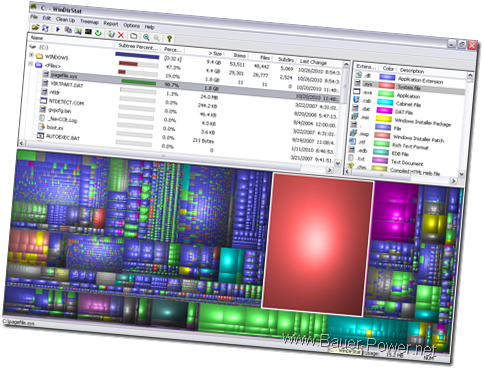I am sitting in a VMware class right now learning about how to install, configure and manage VMware vSphere 4.1. The thing is I do this stuff every day at my day job. So why am I here? Well, you have to take a VMware class if you want to take the VCP4 exam. It’s required. It’s also very lame! Just give me a book, and let me go take the test! Don’t make me take a $4,000 useless class!
Anyhoo, so needless to say, I’m not paying very good attention. At this moment we are learning about attaching iSCSI storage. Like I said, I do this all the time. I get it! Instead, I am surfing around on StumbleUpon looking for cool stuff, and I found something you might find interesting. It’s a Windows tool that not only shows you where all your disk space is going, but it shows you in a graphical way! It’s called WinDirStat! Here is a screen shot of my disk space in class:
From their page:
WinDirStat is a disk usage statistics viewer and cleanup tool for Microsoft Windows.
On start up, it reads the whole directory tree once and then presents it in three useful views:
- The directory list, which resembles the tree view of the Windows Explorer but is sorted by file/subtree size,
- The treemap, which shows the whole contents of the directory tree straight away,
- The extension list, which serves as a legend and shows statistics about the file types.
The treemap represents each file as a colored rectangle, the area of which is proportional to the file's size. The rectangles are arranged in such a way, that directories again make up rectangles, which contain all their files and subdirectories. So their area is proportional to the size of the subtrees. The color of a rectangle indicates the type of the file, as shown in the extension list. The cushion shading additionally brings out the directory structure.
One of the things I like is the little Pacman figure when it does it’s initial scan of the drive! For practical uses though, I think this is a good tool for file server administrators because it allows you to run a report on a particular folder and send an email to the owner to tell them how much space they are using, and to clean it up!
What tools do you use to monitor disk space usage? Are they free? Do they provide cleanup options? Let us know in the comments!


 1:00 AM
1:00 AM
 El DiPablo
El DiPablo





